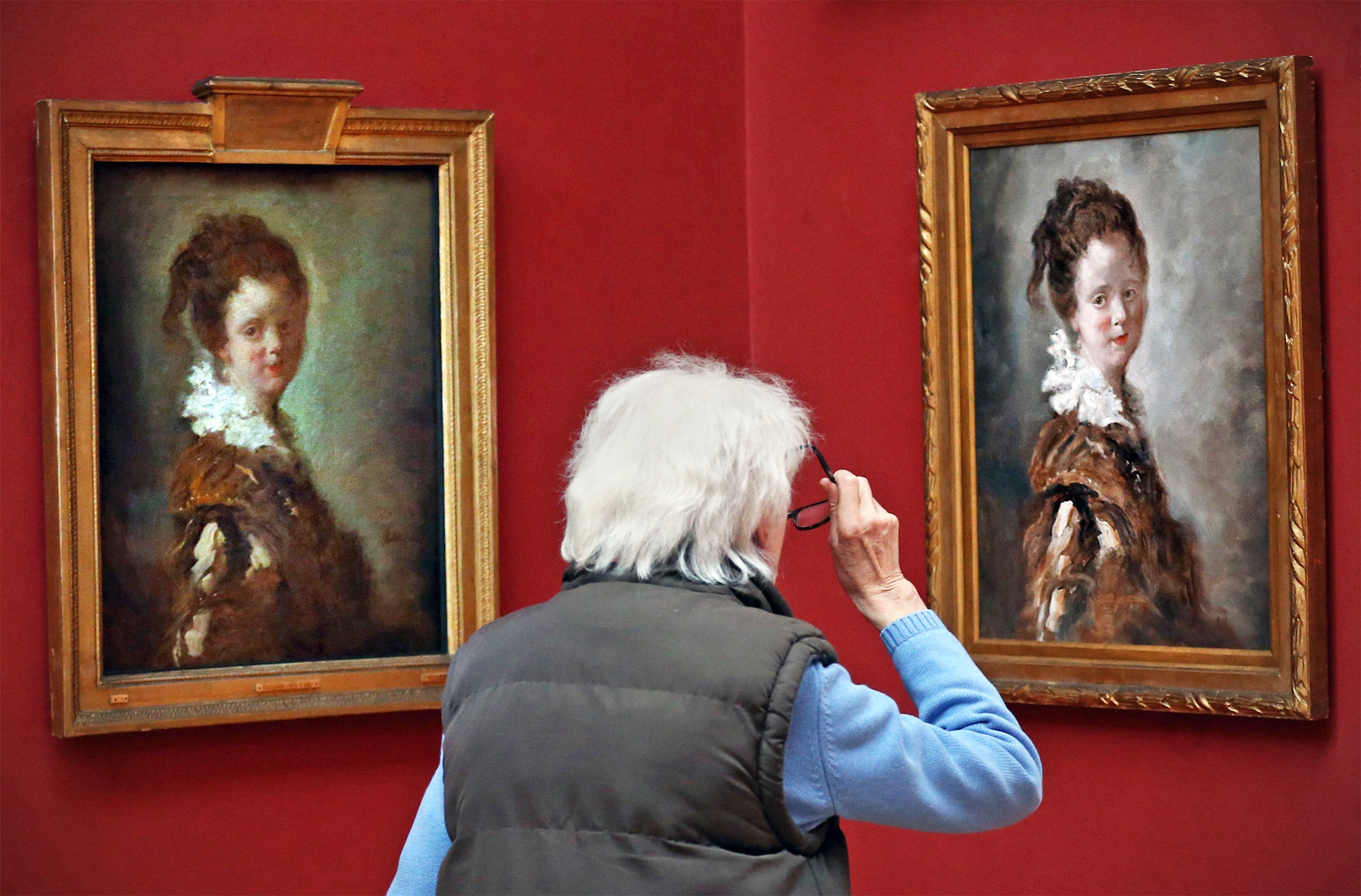Spot the difference: How public identified a fake painting at the Dulwich Picture Gallery
Project was part of successful plan to lure visitors back

Britain remains a nation of “art connoisseurs”, according to the chief curator of a London gallery after a fake old master slipped into a collection of works on permanent display was the one most frequently identified as a copy.
As part of a project to lure visitors back, the Dulwich Picture Gallery had one of the oil paintings from its collection copied in China, and displayed the copy rather than the original. It then asked visitors to guess the imposter.
The gallery saw a quadrupling of visitors, eager to uncover the fake.
The replica was unmasked yesterday as an 18th-century painting, Young Woman by Jean-Honoré Fragonard, with the curator saying it was “obvious once you spotted it”.
The “Made in China” project, dreamed up by the American artist Doug Fishbone, proved an inspired plan to bring people back to the collection. Before the project was launched in February about 500 people visited a week, but since then about 3,000 amateur art sleuths have poured through the doors.
Xavier Bray, chief curator at the gallery, said it had been a success: “It has turned out exactly as I wanted it to.” It was obvious that the majority of visitors were searching for the fake, he continued. “You could see them looking at every single picture, trying to work out the brush marks,” Dr Bray said. “Never before have I seen so many people actively looking at each painting.”
Of the 3,000 guesses logged on the gallery’s iPad, the majority, about 11 per cent, guessed correctly that the Fragonard was a fake. Dr Bray said: “That’s good news; we are still a nation of connoisseurs.”
He continued: “For a curator who is constantly being told the old masters are now dead, it was very satisfying to see it was not true, that people still want to learn and look. This was a basic exercise but a very productive one.”
Not everyone was as good at separating the fake from the genuine works. Many guessed that Portrait of a Lady by Sir Peter Paul Rubens, restored a decade ago, was a fake. “Quite a few were so certain about it, only to get it totally wrong,” Dr Bray said.
Mr Fishbone and Dr Bray chose the Fragonard “because it is one of Fragonard’s greatest pictures in this country but nobody ever looks at it; it’s never reproduced and tends to be forgotten. I wanted to make it famous,” the chief curator said.
Young Woman is one of Fragonard’s figures de fantaisie series in oil paint, and was painted in about 1769.
The gallery sent a digital image to the Meisheng Oil Painting Manufacture Co, a professional supplier of oil paintings which works with 150 artists in Xiamen, in the Fujian province of China, last year and hung the copy in the collection in February.
Dr Bray continued: “When the replica was first hung in the collection it did disappear among the others. It didn’t look as obvious as it does now.” Fragonard’s original was returned to the wall yesterday alongside the replica, to highlight the differences.
The curator said he was heartened by the response. “It is frustrating if people buy a ticket to an exhibition and just walk straight past a great Rubens without even looking. We take a lot of our public collections for granted in this country,” he said.
Flawed effort: Brightest is not best
1 The Chinese painter has mimicked Fragonard’s brushwork but, according to Dr Bray, copies “without really understanding the effect. It’s a crude pastiche of an original”. Fragonard’s original “perfectly captures elements like the lace collar despite the loose and instinctive brushwork”.
2 Another key difference is in the young woman’s face. The original has “a lot more psychological content compared to the replica,” Dr Bray said, adding her expression in the copy was “a bit vacant”.
3 One of the most obvious differences, especially when the paintings are placed side by side, is brightness. “The new one is so much brighter,” Dr Bray said. “The beauty of the Fragonard is it’s an untouched original and the varnish is still original, the canvas hasn’t been relined. The replica, obviously, has not aged at all.”
Subscribe to Independent Premium to bookmark this article
Want to bookmark your favourite articles and stories to read or reference later? Start your Independent Premium subscription today.
